Artist Glenn Brown and Partner Edgar Laguinia Revive a Majestic English Manor House Paying Exacting Attention to Period Details
To restore the 10-bedroom estate in rural Suffolk, England, the couple worked with an architectural historian to bring back the property’s original grandeur
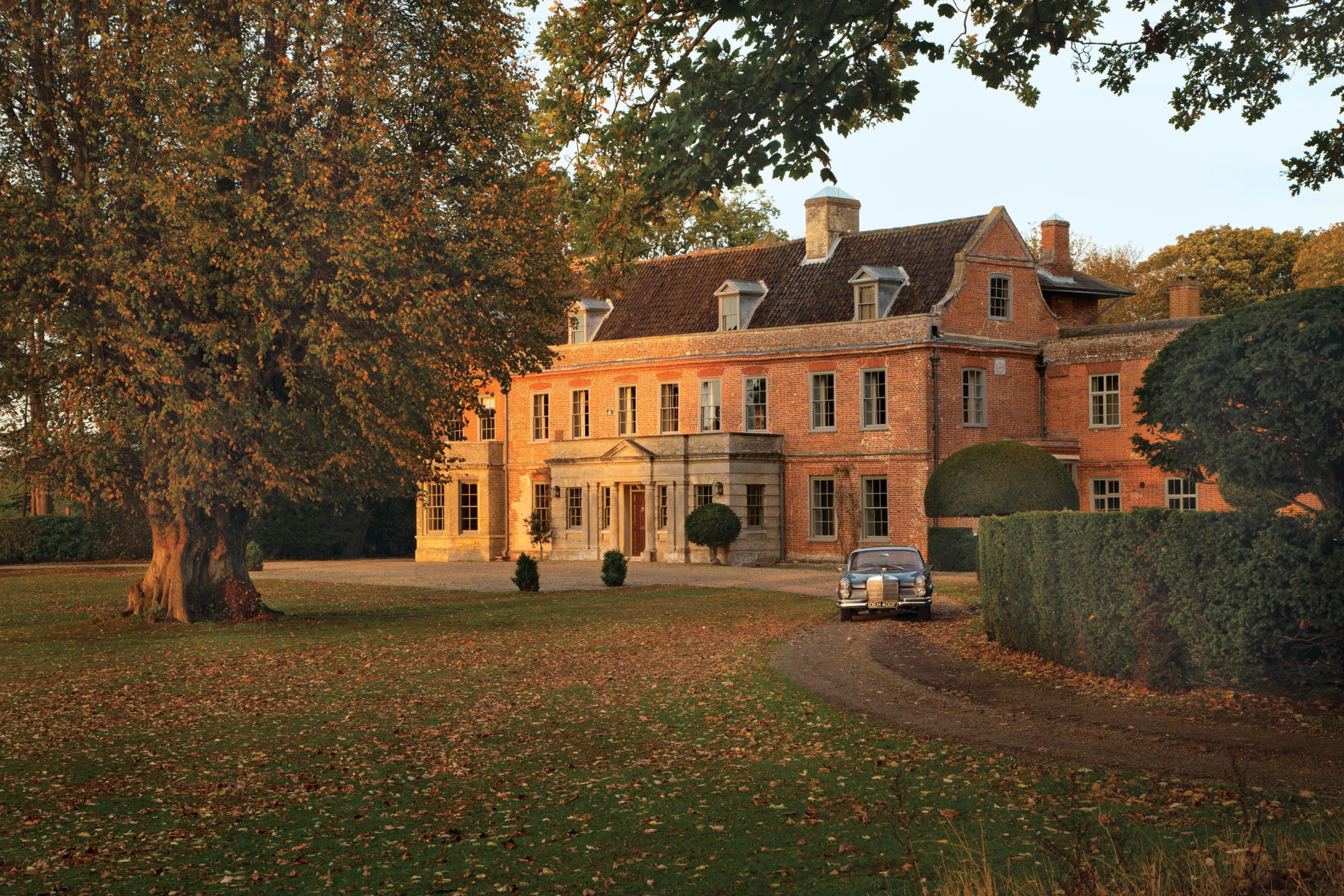
“The first time I saw the house, I really didn’t like it,” British painter Glenn Brown confides. “It was too big and needed far too much work. We had just one rule when we started to look for a new home: Do not buy a project. I should spend my time being an artist, not renovating a house.” But that rule soon went out the window. “We saw another house for sale nearby, and it was all finished and beautifully done. I asked the couple why they were selling, and they said, ‘Oh, we’ve seen somewhere even nicer, but it needs a lot of work.’ I realized that they were talking about this house, and it brought out the competitive streak in me. So we went back for another look. There’s a slight hill at the front of the property. As we walked up for the first time and looked down onto the house, with its Dutch gables, I realized I absolutely had to have it.” For husband Edgar Laguinia, it was a different feature that captured him. “There was a tree bursting with figs. We hadn’t had breakfast or lunch and were starving. We just fed ourselves with figs. It was beautiful.”
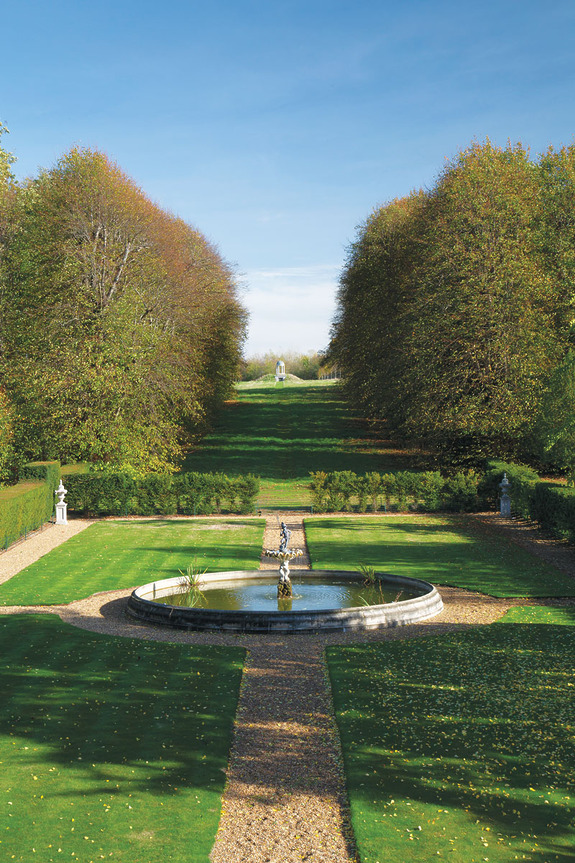
Brown and Laguinia knew what they were getting themselves into. The ten-bedroom manor house in rural Suffolk in the east of England dated from 1679 and had been extended in 1730, with later additions and alterations over the centuries. “When we bought it, in 2010, it was in a very sorry state even though it was a protected building. It had nine court enforcement orders against the previous owner, who had damaged it in various ways. Original floorboards and paneling had been ripped out and fireplaces had gone. These were all things that we would have to make good if we bought it, but that didn’t put us off. We would have done them anyway, because our plan was to return the house to its original state.” The restoration turned out to be a major undertaking that would last three years.
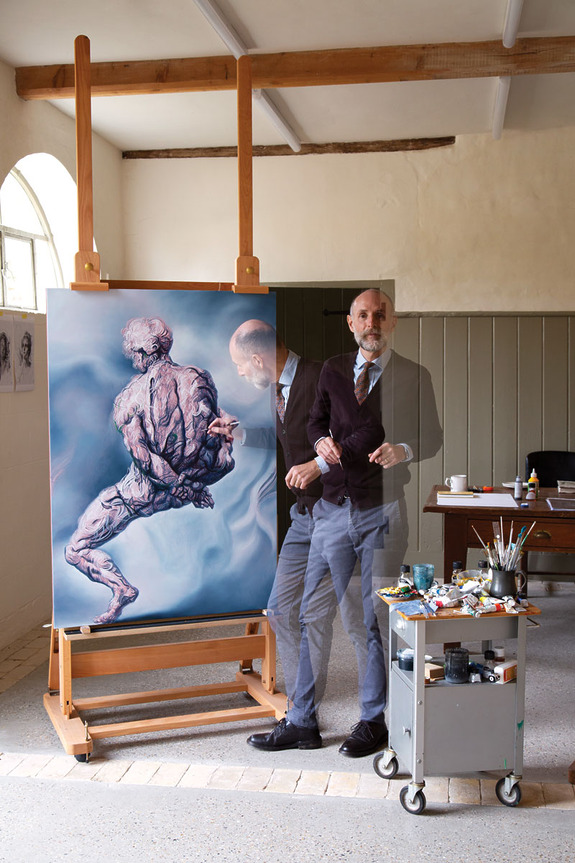
Brown grew up in a very different environment. “Our house was not particularly interesting. It was probably built in the 1960s and was in the middle of rural northeast England. My parents had no interest in interior design. My father’s favorite colors were brown and green, and that reflected itself in the furniture, which was extremely dull. But I was always interested in architecture. I did drawings of buildings and built models of houses out of sticks. At that young age, I also knew something about period correctness. We had two large stone fireplaces, rather unappealing, slightly Brutalist things. But I understood that even though they might be a bit ugly, they fitted a certain look. Even as a child, I liked the fact that our house was very 1960s, while our friends had farmhouses with a totally different aesthetic of timber beams in inglenook fireplaces.”
He could not wait to have his own place. “I thought design could be more fun than what I had grown up with. But it didn’t matter to me what age the house was. It could be an old cottage or a modern apartment, as long as it was done well.”
An early influence on his understanding of interiors, and an inspiration for his future career as an artist, came from an unlikely source. “In Andrei Tarkovsky’s 1972 film, Solaris, which is set aboard a space station orbiting a distant planet, there is a room with reproductions of five Breughel paintings in wooden frames. On a spacecraft … this is Soviet science fiction, after all. It was just a simple, beautiful modern space with a round table. But I loved the way that the paintings were used as an escape from this futuristic setting into 16th-century Netherlands. From that young age, I understood that paintings were windows into a different world or a different age.”
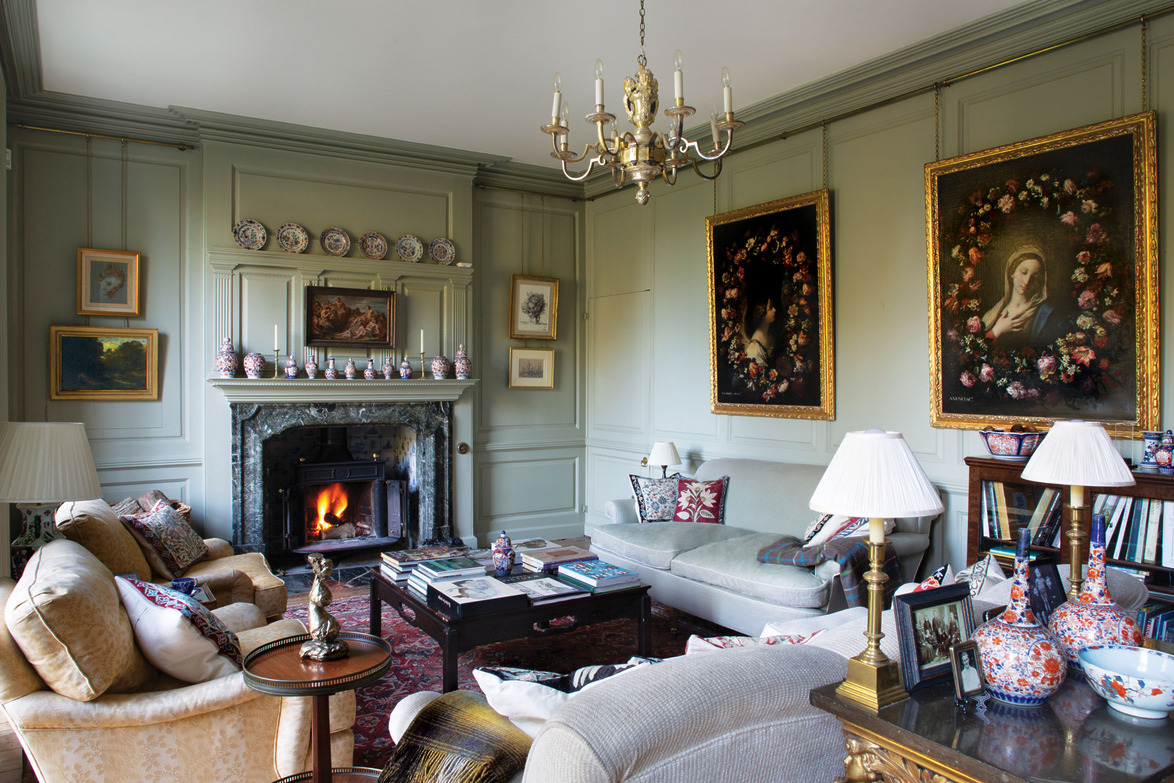
Brown and Laguinia employed a specialist architectural firm and restoration company. “They deal in historic buildings, so they understand the fabric of the house and how to use traditional building materials, processes, and techniques to rebuild in a sensitive and appropriate way. The house has various states done at different times. There is an Edwardian wing and a Victorian addition. We wanted that part to be very Victorian and the 1730 rooms to be as Georgian as possible.”
They took the quest for authenticity very seriously and embarked on extensive historical research. “We enlisted an architectural historian and went to other period properties to look carefully at all the details. We scraped back the layers of paint to find what the original color might have been. We were trying to get the house to tell us what color to paint it. We hid the plug sockets underneath the floorboards. It was a slow process of taking down walls and discovering what was behind them. We learned so much along the way. For example, we discovered that in 1730, when many of these rooms were made, they liked wood paneling. Ten years later, the fashion was wallpaper. So in some rooms they took the paneling off or just put fabric over the top and then pasted wallpaper on top of that.
We had to decide which was the dominant aesthetic of each room before we could return it to its correct state. We took out some Victorian features in order to reveal the original fireplaces from 1679, which had been hidden for 150 years.”
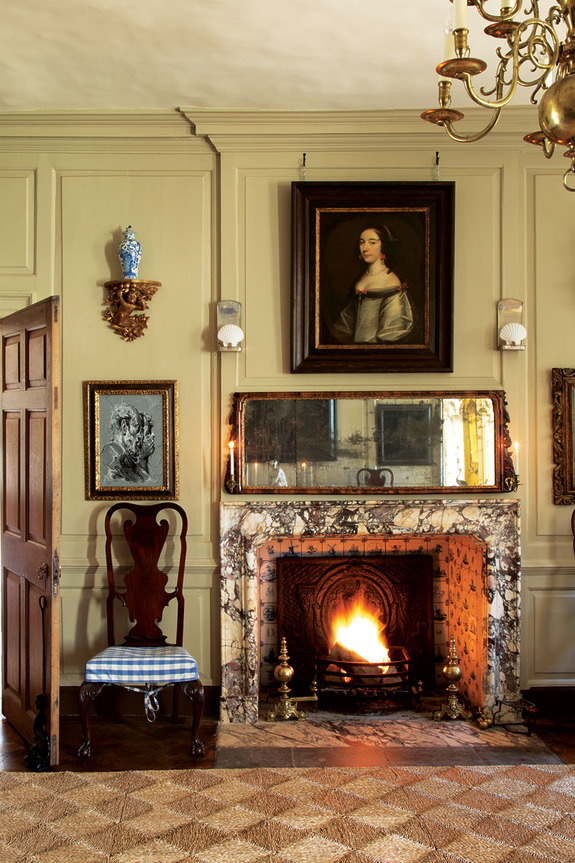
The attention to detail was extraordinary. Laguinia says that Brown insisted on getting everything just right down to the last screwhead. “Every screw and every door hinge had to be perfectly true to the vertical—and it had to be the right period screw. It couldn’t be a modern screw.”
“That’s a little bit like my own work,” responds Brown, who, in his paintings, takes elements from reproductions of other artists’ works and then transforms the appropriated image or images by changing their position and size, or by coloring them in unreal, contemporary tones or desaturating them of most color. “I like obsessing over the details in a painting or a drawing. And I like the details in the house to be as correct to the period as possible.”
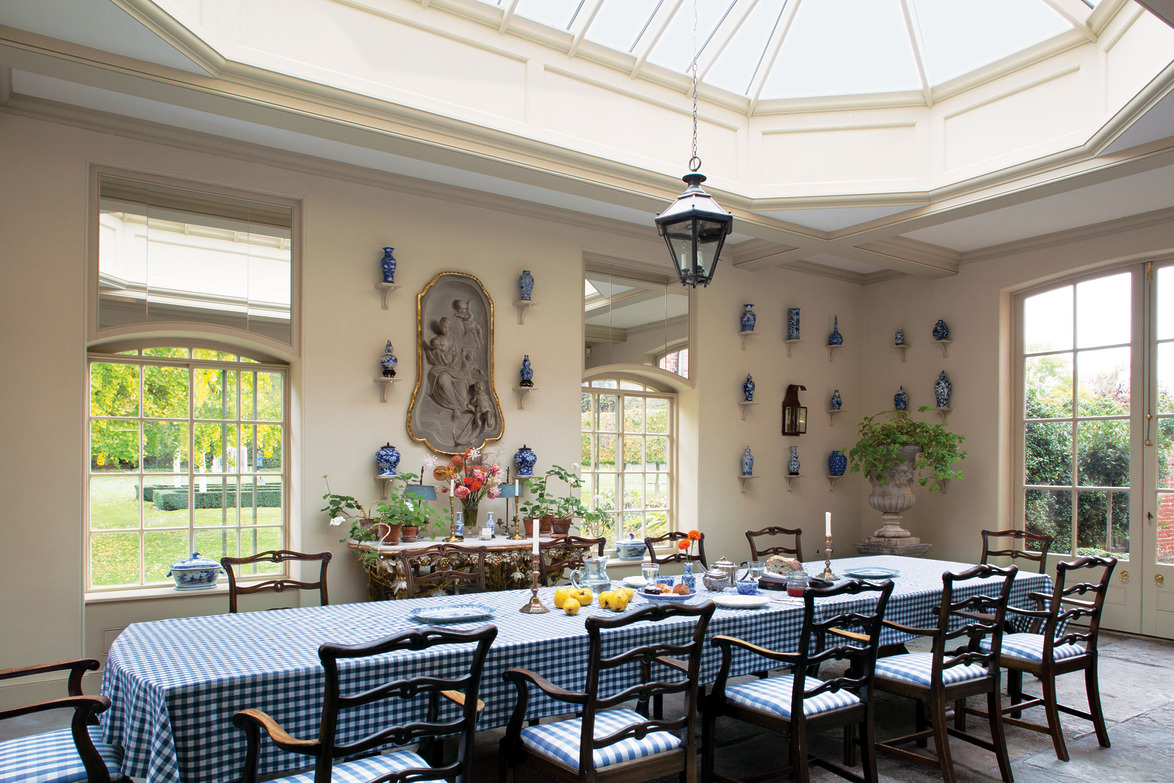
Replacing the floors was a particular challenge, since the original wood used, pitch pine, is no longer readily available. In the end, they found some old beams from demolished warehouses in Brooklyn that they shipped over and cut to size. The baths, too, were not as straightforward as they are in a modern build. “All the fittings are either Victorian or Edwardian, but nothing can touch the walls because we wanted to respect the paneling and not change the walls architecturally. So almost everything—toilet, bath, radiators—is freestanding and the pipework goes straight down into the floor.”
The art decorating the rooms is an eclectic mix of historic works in keeping with the house through the ages—one room thought to have been altered in the 1760s contains paintings by Joshua Reynolds and Allan Ramsay, for example—and contemporary art, including works by Brown himself and those of their friends. Antique mirrors and sculpture alongside Brown’s collection of fine Chinese ceramics contribute to the period atmosphere. Upstairs, there are two large custom-made beds that are replicas of a bed the pair saw in the former home of the composer George Frideric Handel in London’s Mayfair, from the same Georgian period. The rail-and-chain method of hanging pictures in the paneled rooms was adapted from a similar system in Blacks members’ club in Soho, again in a house of the same date.
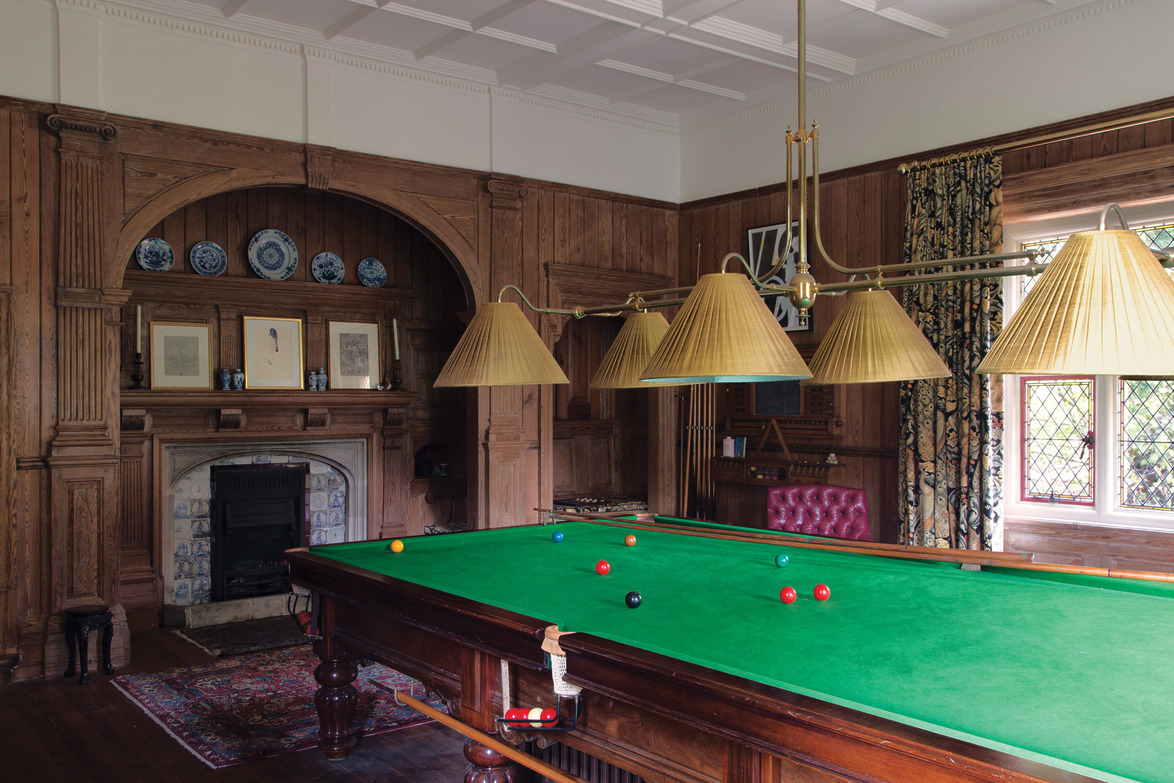
“I like it when a room transports you, when you walk in and you no longer feel as if you are in the 21st century, when it takes you on a time trip to a different aesthetic that had different politics and a different understanding of the world, and a different appreciation of textures, colors, and light. That’s what gives me the greatest pleasure about the house.”
When asked what comes first for him—comfort, function, or display—Brown is unequivocal with his answer. “Not function and definitely not comfort. It’s the display, it’s the aesthetic of the room. If it’s a piece of furniture, I’m much more interested in whether it’s a period-correct piece using the right fabric and that it’s been maintained in the correct way than I am in its being a comfortable chair. Generally, we don’t have very many comfortable chairs in this house.”
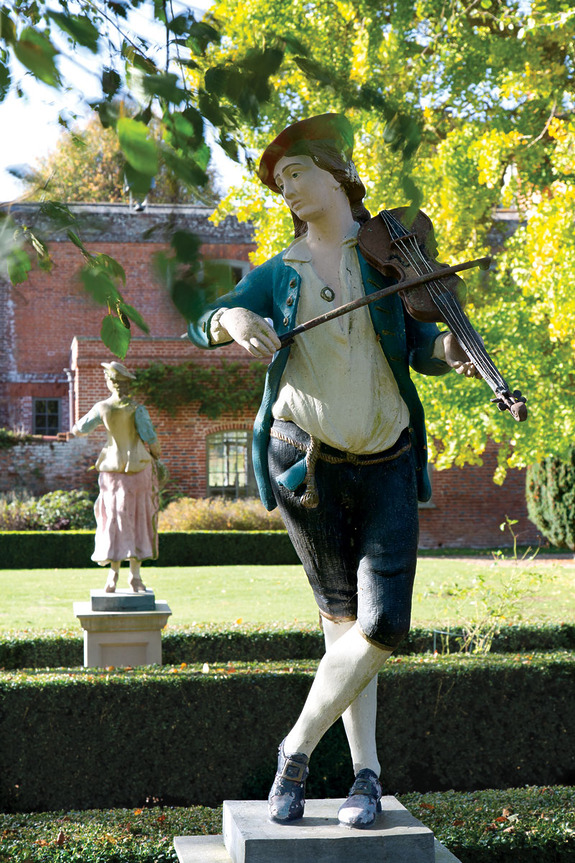
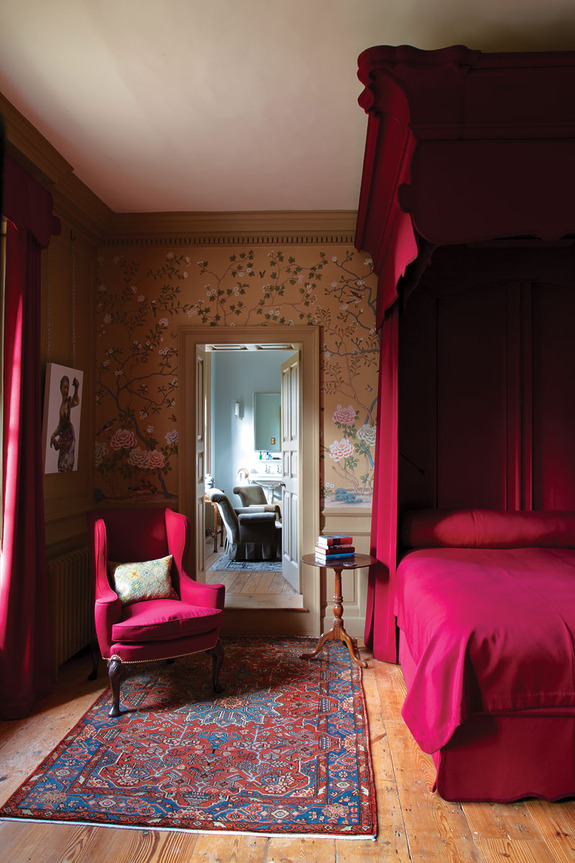
That doesn’t stop them from inviting friends and hosting parties. “This is absolutely our private home. It’s not open to the public, but it is very much a place for entertaining. It comes alive when it is full of people.”
Story adapted from Inside the Homes of Artists: For Art’s Sake with text by Tiqui Atencio Demirdjian and photographs by Jean-François Jaussaud, Rizzoli, 2024.
A version of this article first appeared in print in our 2025 Late Fall Issue under the headline “Stepping Into the Past.” Subscribe to the magazine.